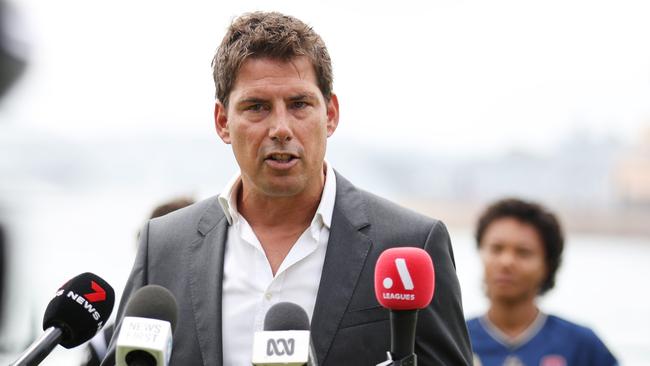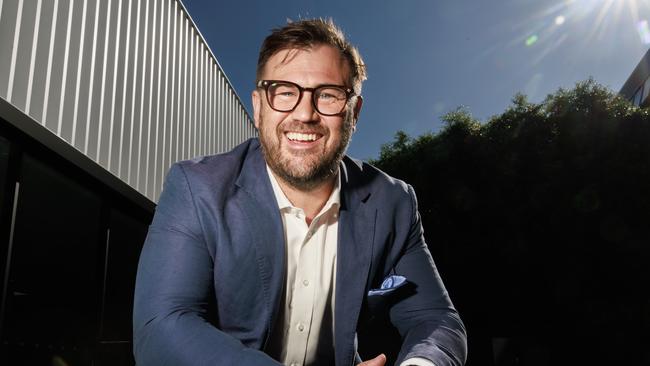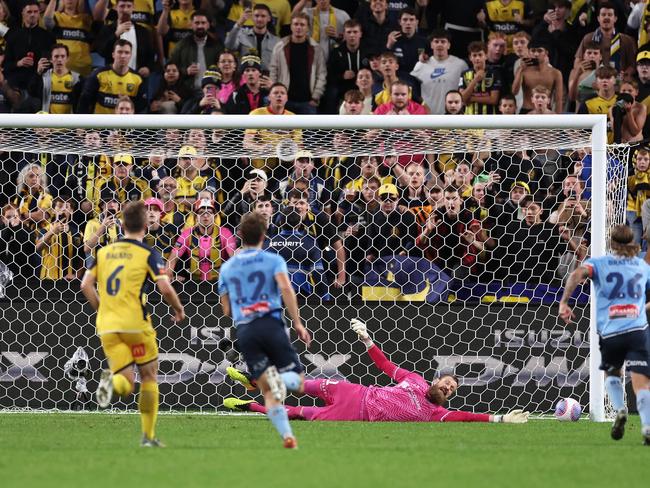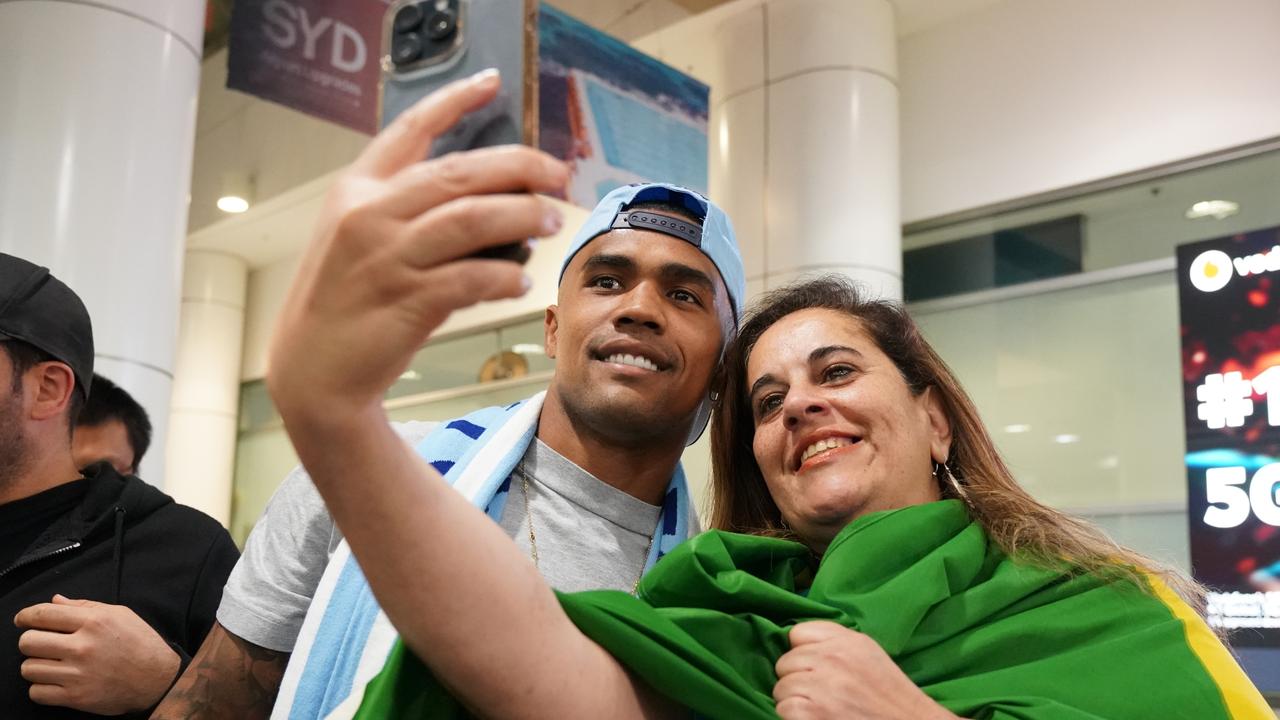Why the A-League is on the brink of financial disaster amid plan to slash club funding
Australia’s top tier soccer clubs will be forced to battle for financial survival after a controversial plan which threatens the league’s future was unveiled.

A-League
Don't miss out on the headlines from A-League. Followed categories will be added to My News.
Australia’s top tier soccer competition is on the brink of financial disaster, with the A-League planning to slash their funding to clubs by 80 per cent – or $2 million a year.
The game’s owner, the Australian Professional Leagues (APL), is threatening to only give clubs a $500,000 a year distribution next season as it tries to plug a $100 million funding hole.
The funding would be $2 million short of what clubs were promised – almost equal to each mens’ teams salary cap.
The distributions were discussed at an A-League meeting earlier this month but a final decision was reserved until after this season’s grand final.
The funding brawl comes as liquidation firm KordaMentha revealed on Friday the Newcastle Jets has been sold after an eight month search and the collapse of the Perth Glory last year.

Socceroo legend Robbie Slater said the future of some clubs would be put at risk by the A-League’s shortfall, which was caused by its broadcast deal with Channel Ten and Paramount Plus.
“This has been the most difficult year in the history of the A-League,” Slater said.
“This broadcast deal is the worst in history for football. Who signed this deal? There’s KPIs about subscriptions, and they have had to pay for their own TV production.”


Despite promising to make soccer Australia’s number one sport, Network Ten punted its live coverage from its main channel to Ten Bold, which Slater said was damaging the game.
“They say it’s OK because it’s on free to air but it’s on Ten Bold. Some TVs don’t even get Ten Bold,” he said.
“The reality of this TV deal is that the distribution to clubs could be as low as $500,000. They were promised this year $2.4 million.
“I don’t know if clubs will fold but it’s going to make it very difficult.
“The question is who signed this deal? And where did the $140m from Silver Lake go? But they never say anything.”

Five A-League insiders, who spoke on condition of anonymity, said the elite competition was in a perilous financial state.
Only Melbourne Victory and Melbourne City and the Sydney FC and Wanderers had secure futures, an insider said.
There was a concern that other clubs could follow the path of Perth Glory, which went into receivership in July last year, owing at least $12 million.
KordaMentha was called in last year to sell the Perth Glory, whose debts did not include a $4 million bill for player wages which the A-League covered while it was in administration.
Victorian businessman Ross Pelligra paid just $1 for the club in February.
The league was adding a new team based in Auckland, New Zealand, next season despite being on the edge of a financial cliff.
A senior club figure said they were being kept in the dark about the A-League’s plans.
“They had $100m in the bank and now they don’t have $100m in the bank any more,” the senior figure said.
“They are going to have to cut costs or increase revenue.”
Another senior club insider said A-League players were being overpaid, with some described as “donkeys” earning $400,000 a year.
Central Coast Mariners owner Richard Peil has told Code Sports that player payments were “not sustainable”.
“AFL and NRL have billion-dollar deals. Ours is substantially less. Our corporate sponsorship dollars are much less. Yet some players are getting $1.2, $1.3 million, which is more than what Nathan Cleary is on,” he said last week.
“We are simply paying the players at the top end way too much.”

The A-League split from Football Australia in 2021 after investment firm Silver Lake paid $140 million for a 33 per cent stake in the game.
The broadcast deal with Ten and Paramount Plus included penalties if it failed to reach subscriber number targets.
The deal was believed to have only delivered $5 million to the game last year, with the agreement due to run until the end of the 2025-26 season.
Fans were furious when the broadcast deal started, with Ten taking ad breaks during live play.
The league also had to pay $12m a year for broadcast production costs and there were criticisms that coverage of the women’s game was poor.
The A-League’s production company Global Advance went into administration in March, leaving the A-League scrambling to sign a new contract with its previous broadcasters NEP.
The game’s self-inflicted wounds go deeper, with a social media app called KeepUp bleeding at least $30 million before it was closed.
The APL’s financial woes led to the sacking of 40 people based in its head office in January.
Under the current Collective Bargaining Agreement (CBA), the minimum a club must spend on its men’s team is $2.25 million, with a $2.6m cap. while the women’s teams’ minimum salary cap is $550,000, and capped at $600,000.
“Clubs are not going to accept a $500,000 distribution,” a senior figure said.
Former federal Labor Government Minister Stephen Conroy, who was appointed the APL’s inaugural independent Chair last September, declined an interview request this week.

In an open letter to fans three months ago, Mr Conroy acknowledged the work ahead in making the game sustainable.
“Whilst we have had good growth across our core metrics, we acknowledge more needs to be done to get the leagues where we want them to be, and sustainable A-Leagues growth will be the focus of our team,” he wrote.
An A-League spokesman said in a statement: “As part of our ongoing, planned strategic and commercial review, the APL Board met a few weeks ago to review a number of our financial metrics and key leagues issues. Club Grants were one area under discussion.
“The Board did not reach a resolution in its meeting. As there has been no agreement on this item, any Club Grant values reported are purely speculative. The APL Board will issue a statement when it reaches a resolution on this matter.”
More Coverage
Originally published as Why the A-League is on the brink of financial disaster amid plan to slash club funding




